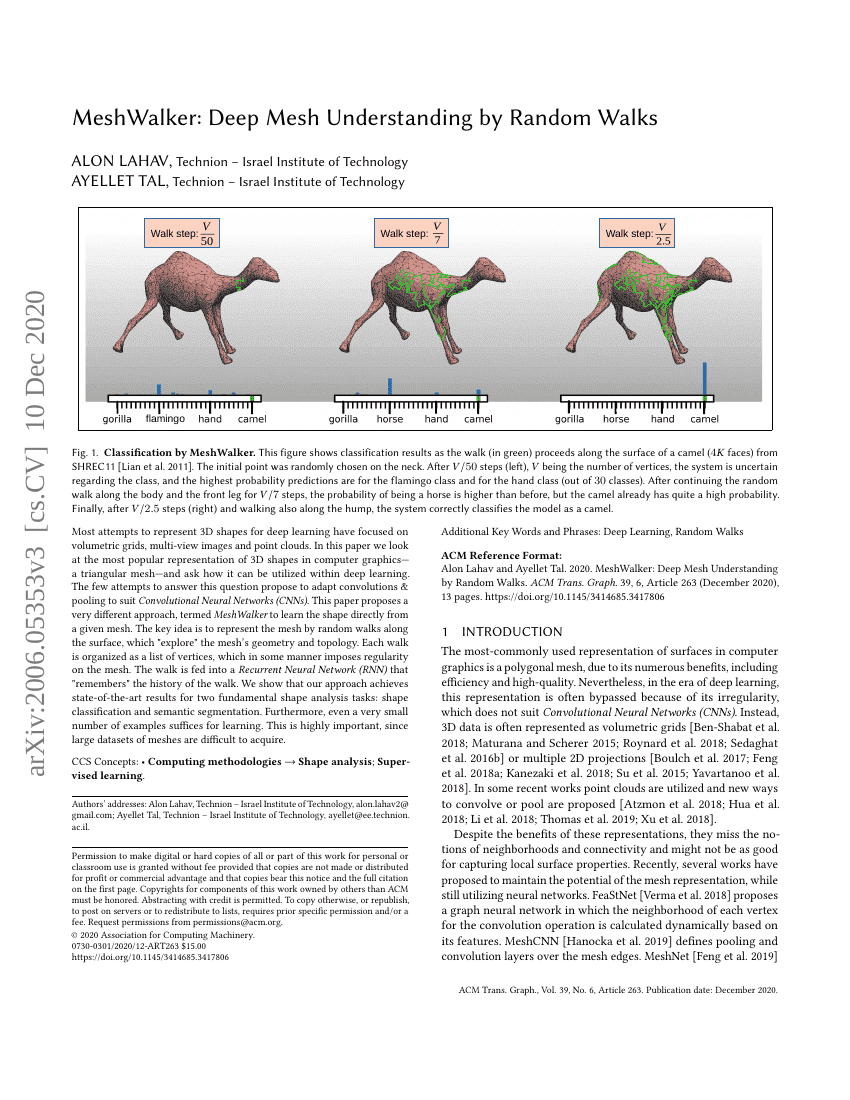Command Palette
Search for a command to run...
Lahav Alon ; Tal Ayellet

Abstract
Most attempts to represent 3D shapes for deep learning have focused onvolumetric grids, multi-view images and point clouds. In this paper we look atthe most popular representation of 3D shapes in computer graphics - atriangular mesh - and ask how it can be utilized within deep learning. The fewattempts to answer this question propose to adapt convolutions & pooling tosuit Convolutional Neural Networks (CNNs). This paper proposes a very differentapproach, termed MeshWalker, to learn the shape directly from a given mesh. Thekey idea is to represent the mesh by random walks along the surface, which"explore" the mesh's geometry and topology. Each walk is organized as a list ofvertices, which in some manner imposes regularity on the mesh. The walk is fedinto a Recurrent Neural Network (RNN) that "remembers" the history of the walk.We show that our approach achieves state-of-the-art results for two fundamentalshape analysis tasks: shape classification and semantic segmentation.Furthermore, even a very small number of examples suffices for learning. Thisis highly important, since large datasets of meshes are difficult to acquire.
Code Repositories
Benchmarks
| Benchmark | Methodology | Metrics |
|---|---|---|
| 3d-object-recognition-on-cube-engraving | MeshWalker (ours) | Accuracy: 98.6 |
| 3d-object-recognition-on-modelnet40 | MeshWalker (ours) | Accuracy: 92.3% |
| 3d-object-recognition-on-shrec11-split10-10 | MeshWalker (ours) | Per-Class Accuracy: 97.1 |
| 3d-object-recognition-on-shrec11-split16-4 | MeshWalker (ours) | Per-Class Accuracy: 98.6 |
Build AI with AI
From idea to launch — accelerate your AI development with free AI co-coding, out-of-the-box environment and best price of GPUs.